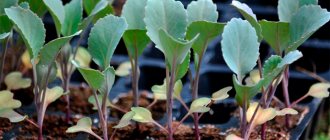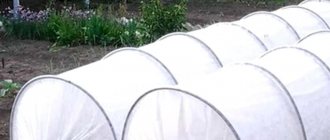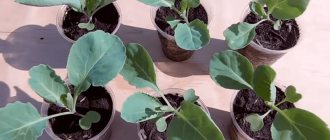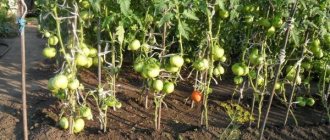Correct and timely supply of nutrients is important and necessary for the full growth and high-quality fruit production of vegetables. Gardeners often argue about the choice of fertilizers. It is unlikely that it will be possible to fully feed tomato seedlings with organic additives alone. Only an integrated approach can satisfy all the nutritional needs of nightshades. Laboratory studies show that, contrary to the opinion of ardent opponents of agrochemicals who advocate an environmentally friendly harvest, organics, when used incorrectly, produce consequences in the form of accumulation of nitrates in vegetables, just like the unjustified introduction of synthetic compounds. Everything should be in moderation.
Preparations in the form of granules, suspensions, concentrates, consisting of 2-3 useful substances, are called simple, from a set of macro- and microelements - complex
General feeding rules
You should not try to eliminate possible mistakes made during cultivation using fertilizers. If the condition of tomatoes deteriorates due to a violation of lighting, watering, air temperature, disease, delay in planting in open ground or other circumstances when they have to stay in cramped containers longer than originally planned, then fertilizing will only be an auxiliary support.
In this case, it is imperative to make sure that the unnatural modification occurred as a result of a mineral imbalance, and is not a sign of pests or a symptom of pathogen infection. It is necessary to feed weakened seedlings located in cramped conditions in compliance with gentle dosages, be sure to adjust the sequence of introducing individual elements.
Even a slight overdose of fertilizers will have a more negative impact than the expected deficiency
Pure preparations for tender sprouts are contraindicated. They are pre-diluted with settled soft water according to the attached instructions and only then used in a convenient way - root or foliar. When using dry powdered or granular nutritional complexes, their action will have to be accompanied by frequent watering, which is undesirable.
It is recommended to feed seedlings in the early morning or evening , when the air temperature is lower than usual and the lighting is turned off.
The soil must be moistened in advance so that the roots do not get burned.
What to feed if the seedlings are thin
Sometimes tomato seedlings stretch out, that is, the stems become thin and long. This happens mostly from a lack of sunlight, as well as an excess of nitrogen. Elongated seedlings get sick more often and are more susceptible to various diseases. For example, black leg.
Thin seedlings must be fed with potassium-phosphorus fertilizers. If the seedlings are stretched out, they are not advised to give them a rooting agent. It is better to use superphosphate. This drug will reduce the effects of nitrogen.
IMPORTANT! If the seedlings look thin and pale, check the conditions under which they are kept. With a high degree of probability, the conditions for keeping tomatoes are inappropriate.
Visual diagnosis of mineral deficiency
Experienced vegetable growers can draw conclusions based on the characteristic signs of starvation of seedlings (structure, size, shape and color of leaves, the nature of tissue damage) and determine what exactly the seedlings lack.
Premature wilting and falling of the lower leaves indicates the need to apply ammonia and nitrate fertilizers.
The appearance of a rich shade of leaves and veins requires the addition of water-soluble superphosphates to the diet.
Yellowing of the leaf edges indicates a possible deficiency of potassium substances.
Fragile, lodging, twisted, thin stems are most likely the result of a lack of magnesium.
With an excess of magnesium, the leaves decrease in size; during daylight hours, curling and wrinkling of young leaves is detected
If you independently establish the exact cause of developmental deviations from the norm, it is advisable to purchase multifunctional complexes in the form of liquid mineral compounds with humic acids, which fully include nitrogen, potassium, phosphorus and other useful components.
Modern soil enrichers are produced in forms that are easily digestible for plants and can be used at all stages of development, from preparing seeds to caring for adult bushes.
Safe stimulant drug
If you still like to experiment, take advantage of the achievements of scientific and technological progress, you should buy only safe substances, carefully read the composition, try to understand chemistry, even if you have no inclination or ability for this subject and you have known about it since you were in school.
Stimulating drugs that are suitable for feeding tomato seedlings include sodium humate. It is 100% safe for health. It has been used for many years.
Research confirms that the substance is not toxic and is not a mutagen. The effect of its use will be surprising. This is a very good remedy. You can only hear good reviews about him.
The main component here is sodium salts of humic acids. They accelerate plant growth, increase vitality, and increase resistance to a variety of negative environmental factors.
Sodium humate is an extract from natural fertilizers, an environmentally friendly preparation. Nitrates are salts of nitric acid and metals. They cannot be used to feed tomato seedlings. They already enter the human body in large quantities along with low-quality products and water.
To feed tomato seedlings, prepare an aqueous solution of sodium humate: 0.5 g per 1 liter of water. It is always available in stores, is in demand, and is inexpensive. It is used both for feeding seedlings and for feeding adult plants.
Three pillars: NPK in numbers
Existing fertilizers are conventionally divided into depleted , neutral and enriched . To understand the percentage of useless binding salts in the purchased package, the three numbers indicated on the packaging are added and the resulting amount is subtracted from 100. If the remaining number is more than 70% of the total contents, the agrochemical product is considered depleted, from 60 to 70% is considered average, less than 60% – enriched. At first, standard low- and medium-saturated complexes are quite suitable for seedlings grown at home on a windowsill.
If you notice an unhealthy developmental delay, pallor, shredding of leaves, coarsening, lignification of shoots and stems, you should use any amide mineral powders (ammonium nitrate, urea). with nitrogen , because its excess can cause the stems to stretch and intensive growth of green mass to the detriment of future flowering and fruiting.
Phosphorus is important for the formation of a good root system and strong, thick stems
Phosphorus depletion results in stunted growth and changes in the color of leaf veins and stems from green to purple-violet . Replenish phosphorus with superphosphate - regular or double. It is much more convenient to use potassium monophosphate, which is easily accessible to the roots. Phosphates do not have good contact with water, so first they are diluted with boiling water (1 tablespoon per 1 glass), left for about a day, shaking occasionally. Then the mixture is filtered so that undissolved particles do not burn the roots, and topped up with 2 liters of water.
Tomato seedlings, especially in the initial stages of development, are partial to potassium . Its absence leads to excess accumulation of starch, which manifests itself in the curling of the leaves, the appearance initially of yellowish-brown, as if burnt, dots, then the leaves acquire a light bronze tint . A problem noticed in time can be solved by using solutions of potassium sulfate and potassium magnesium powder.
How to feed tomato seedlings after picking
Picking is a big stress for any seedlings. It should be avoided if possible. But most summer residents pick. Therefore, if you carried out the procedure, then the seedlings need to be fed to strengthen their health and help them adapt after transplantation.
No nutrients will be needed immediately after the procedure. Seedlings need several days to “get over” and take root. The time for feeding occurs 1.5 - 2 weeks after the dive.
ON A NOTE. To help seedlings take root in separate containers, they can be watered with a mild solution of Kornevin, Epin, Zircon.
Potassium monophosphate is also quite effective. The solution can be made from Nitroammophoska. It is sold in bags in almost all hardware stores. Proportions: 1 teaspoon per 3-liter jar of water. Consumption rate – 100 ml per 1 seedling.
The many faces of chlorosis
Non-infectious chlorosis - a violation of chlorophyll synthesis - often develops on depleted soils due to violations of cultivation technology. The disease can also be infectious (viral) in nature. Treatment is significantly complicated by the fact that it is difficult to understand from external signs what specific type of chlorosis has affected the plants.
In all cases, inhibition of photosynthesis processes is observed, which negatively affects the general condition
Iron chlorosis is characterized by a gradual yellowing of the entire aboveground part, including the stem, although the veins remain green. Prominent brownish spots between the veins indicate that the bushes need magnesium. to provide seedlings with adequate iron and magnesium is by spraying with dissolved chelates, for example, with products such as “Ferovit”, “Micro-Fe”, “Ferrylene”. During magnesium fasting, it is good to spray the bushes with so-called dolomite milk or a weak infusion of chicken droppings. But the reason does not always lie in the lack of these substances. Iron and magnesium chlorosis occurs if seedlings grow in acidic soils or are improperly lit (more than 12-14 hours a day). The fact is that these substances are better absorbed in the evening.
lack of copper for a long time , this becomes noticeable by the obvious lightening of the tips of the leaves and loss of tissue elasticity.
If preventive measures are not taken in case of manganese deficiency , the surface of the leaves becomes covered with necrotic foci between the veins, and a mosaic pattern appears on the plate.
The indigestibility of zinc provokes excessive doses of phosphorus mixtures or excessive liming, which can be diagnosed by yellow spots extending to the veins.
With a lack of individual microelements, the morphology and formation of leaves changes
Due to molybdenum deficiency, the leaves first turn pale, then begin to dry out at the edges. It is worth noting that boron, copper, sulfur, zinc, and molybdenum are consumed by plants in negligible quantities. Such difficulties are more often encountered in private farms with constant cultivation on depleted soils in greenhouses. There is no particular need to add microelements specifically for two to three month old seedlings.
Calcium starvation in young seedlings is also quite rare. It can affect older bushes in the form of the notorious blossom end rot. The situation is corrected with the help of a solution of calcium nitrate, but it is worth keeping in mind that a difficult situation sometimes arises not due to the lack of calcium as such. The roots may simply stop absorbing it from the soil if it is oversaturated with nitrogen, potassium, and manganese.
Tip 1: How to plant tomato seedlings
Growing tomatoes is a rather painstaking task, but most gardeners successfully cope with it and reap large harvests from small beds. One of the important conditions for good survival and abundant fruiting of this plant is the timely and correct transplantation of tomato from one container into small pots. Plant growers call this process picking.
You will need
- — Tomato seedlings with two true leaves;
- - soil and small pots;
- - potassium permanganate;
- - water;
- - thermometer;
- - spatula or wooden plank;
- - watering can;
- - growth stimulator (optional).
Instructions
- Get ready to pick up tomato seedlings when their seedlings grow two true leaves. Biologists have proven that both with earlier and with later (with 3-4 leaves) transplantation, plants take root much worse and often get sick.
- Water the soil in the container a couple of hours before starting the process of transplanting tomato so that the water has time to be properly absorbed into the soil. This will allow you to easily remove seedlings from the ground in the future.
- Prepare small pots and soil for replanting tomatoes in advance. The planting soil must be exactly the same in composition as was used when sowing the seeds. To prevent diseases and damage to seedlings, it is recommended to water the soil in pots with a weak solution of potassium permanganate. By the time of picking, the soil used should have time to warm up to a temperature of approximately 20 degrees.
- Dig up the seedlings
using a special spatula or a wide wooden plank, being careful not to damage the lateral roots of small plants.
At this stage, it is necessary to discard all weak and underdeveloped seedlings. The bottom tip of the main root of each selected tomato must be pinched off with your fingernails to allow the root system to continue to develop properly. If this is not done, the root will go deeper, which will damage the future fruiting of the tomatoes. seedlings
under any circumstances - this can damage them! - Plant tomato seedlings in a small hole (about 5-6 cm deep). Please note that the root should not bend! Be sure to compact the soil around the transplanted sprout thoroughly. If the seedlings have managed to stretch out too much, they need to be slightly deepened. However, the cotyledon leaves must be on the soil surface.
- Water each transplanted tomato seedling thoroughly to eliminate any voids in the root system area. Water for irrigation should not be too cold - the optimal temperature is +23-24 degrees. At first, it is best to place pots of tomatoes in the shade and water the plants as the soil dries out, but not too often (only once or twice a week). When the transplanted seedlings take root, place them in a sunny place. Don't forget to ventilate the room regularly. Now your tomatoes will feel good at a temperature of +15-18 degrees.
- KakProsto.ru
On the leaf or at the root?
Experts have found that during the initial growing season, the main nutrition occurs through the foliage. Spraying rates do not have strict limits, but the method allows you to obtain a positive effect when growing any vegetable crops (cucumbers, peppers, eggplants and others). The unique ability of plants to absorb fertilizers throughout the photosynthetic surface is much higher than through the root system.
In this way, nutrients are delivered faster and more efficiently, shortening the path from the root along the stem
Among the advantages of foliar feeding are the strengthening of the immune system and a powerful effect on the plant as a whole, as well as the elimination of the factor of negative chemical reactions between various mineral elements.
Feeding schedule
The need for fertilizing depends on the quality of the substrate. Taking into account the fact that the beds at the planned location for further cultivation are filled with fertilizers in advance, and the seeds are sown in a nutritious soil mixture, feeding at the seedling stage is practically not required.
Soil mixtures are prepared from fertile soil, peat, humus, and sand. Many summer residents use purchased substrates, including peat tablets
Seedlings growing in “empty” soil will definitely need support before planting:
- the first combined feeding is carried out 2-3 days after the appearance of cotyledon leaves with a solution diluted two to three times the dosage recommended on the package;
- the second - when a couple of true leaves appear;
- the third - after picking or transplanting into a larger container at intervals of two weeks.
When the seedlings are 2 months old, it is recommended to treat them with simple superphosphate or another universal complex.
How to feed tomato seedlings to make them plump
There is no specialized fertilizer that will make your tomatoes strong and healthy. The appearance of tomatoes depends on the conditions of their maintenance and the fertilizers that you apply according to the plan.
Two or three feedings and proper care are the key to ensuring that the seedlings turn out healthy, with thick stems and bright foliage.
ON A NOTE. You can activate weight gain in seedlings using the drug Atlet. But, if you do not maintain the seedlings well, then fertilizing will not help.
Folk fertilizers = false expectations
Experts are skeptical about traditional methods of feeding for several reasons. There is not a single scientific evidence about the benefits of such advice. So, drunk tea , coffee grounds , crushed eggshells, at best, will only help to slightly loosen the soil, at worst, they will provoke the activation of spores of pathogenic bacteria.
There are absolutely no nutrients for sprouts in food waste; they are only appropriate in a compost pit in the garden
Infusions of banana peels and onion peels create a favorable environment for the awakening of the larvae of fruit flies, humpbacks, and fungus gnats, which are usually localized on rotting organic matter.
Pharmaceutical products (mumiyo, boric acid) are not absorbed by plants in any way, and spraying with solutions of alcohol-containing preparations (iodine, brilliant green, ammonia) can lead to burns.
When feeding with ash extract, it is worth remembering that the burnt-out remains of young deciduous wood are of the greatest value.
When using ash, it is difficult to calculate the correct dosage and concentration
Yeast itself does not serve as a fertilizer. Being Saccharomyces, they effectively stimulate the work of soil bacteria, so it makes sense to add them when preparing the same compost. Few people know that yeast has one dangerous property: when it starts working, it begins to intensively process potassium and calcium at the same time.
Dangerous nitrates
Many people try not to use stimulants synthesized by humans as fertilizers because of their history and specificity. As a matter of fact, it’s difficult to call them bait or fertilizers. They are created for specific purposes:
- accelerate plant growth;
- increase productivity;
- improve the properties of fruits and more.
Once upon a time, government agencies involved in issuing certificates and permits allowed nitrates to be sold and allowed their use, but upon more thorough research it turned out that they were harmful. In this regard, many people to this day are skeptical about stimulants and try not to use them when growing vegetables, fruits, and herbs.
On the other hand, products containing nitrates can be accidentally purchased, albeit rarely. Unfortunately, dishonest farmers and manufacturers do exist. Activists continue to fight for the human right to healthy food. Scientists have become less trusted, although much more is known about nitrates and harmless stimulants than a few years ago.











